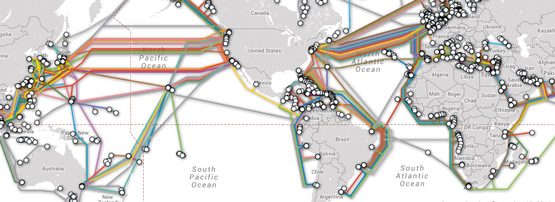
I had the pleasure to attend the Pacific Industry Workshop at APNIC 38, and meet with the ISPs from the region. I heard a fascinating talk by OPT-NC technical staff Philippe Gervolino, Deputy Managing Director, & Bernard Idoux, Telecommunications Manager. They presented on their plans for a nationwide FTTP and 4GLTE deployment.
Over the past seven years they have gone from an ADSL/256kbps, GPRS low speed network with satellite connectivity to the outside world, to a high speed Internet economy.
In September 2008, they launched a submarine cable to Sydney, and have taken bandwidth from 2mbit on ADSL, with 70% of their current copper lines able to deliver 16mbit ADSL2+. A nationwide 3G service was deployed in 2011. Bandwidth demand is growing, with the last six months experiencing a 60% growth. Multi-device attachment is becoming ubiquitous with 2.5 devices per person in the under-25 age group in Noumea. The 260,000 telephony customers visible is more than 100% of the population.
In the coming 2015/2016 cycle, OPT is going to deploy a 4G/LTE Internet. Eighty-five percent of the population should be covered by the end of 2015. Their goal is to switch entirely from copper to fibre over the next eight years. They’re reconstructing their local backbone, and securing a second international submarine cable drop to complement the “gondwana” cable connection which goes to Sydney.
The deployment is explicitly targeting a “digital divide” issue and will be targeting customers experiencing lower quality bandwidth in rural and remote regions, in particular, communities with no ADSL. IPTV and other providers are already targeting this deployment, offering 100 channels of digital TV.
FTTH is going to require a change from owner-bought customer premises equipment (CPE) to network-managed CPE, and since the CPE upgrade is unavoidable to move from copper to fibre, they hope to use this opportunity to deploy fully IPv6 dual-stack CPE.
The second fibre off the island is very likely to be via Fiji or another inter-island hop towards Japan and the USA. This raises issues around the RTT in the region and to the rest of the world. Since installing an undersea cable is a 20+ year investment they want to get this right. Both Google and Akamai have done local caches to provide on-island services. They are working to get as much content locally provided as possible, especially for video content.
As a long thin island, they are very open to single-fibre loss disrupting the entire island. They are working to deploy a ring for data, with a low bandwidth microwave ring already securing voice traffic.
The views expressed by the authors of this blog are their own and do not necessarily reflect the views of APNIC. Please note a Code of Conduct applies to this blog.
